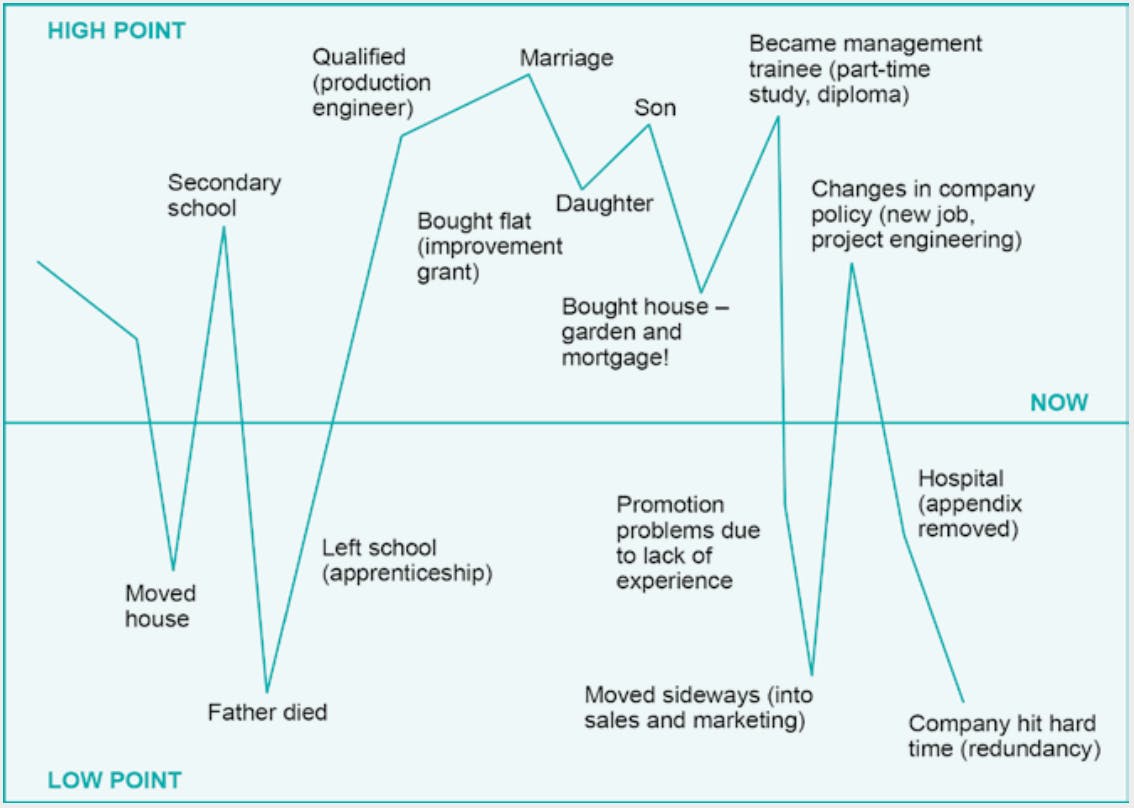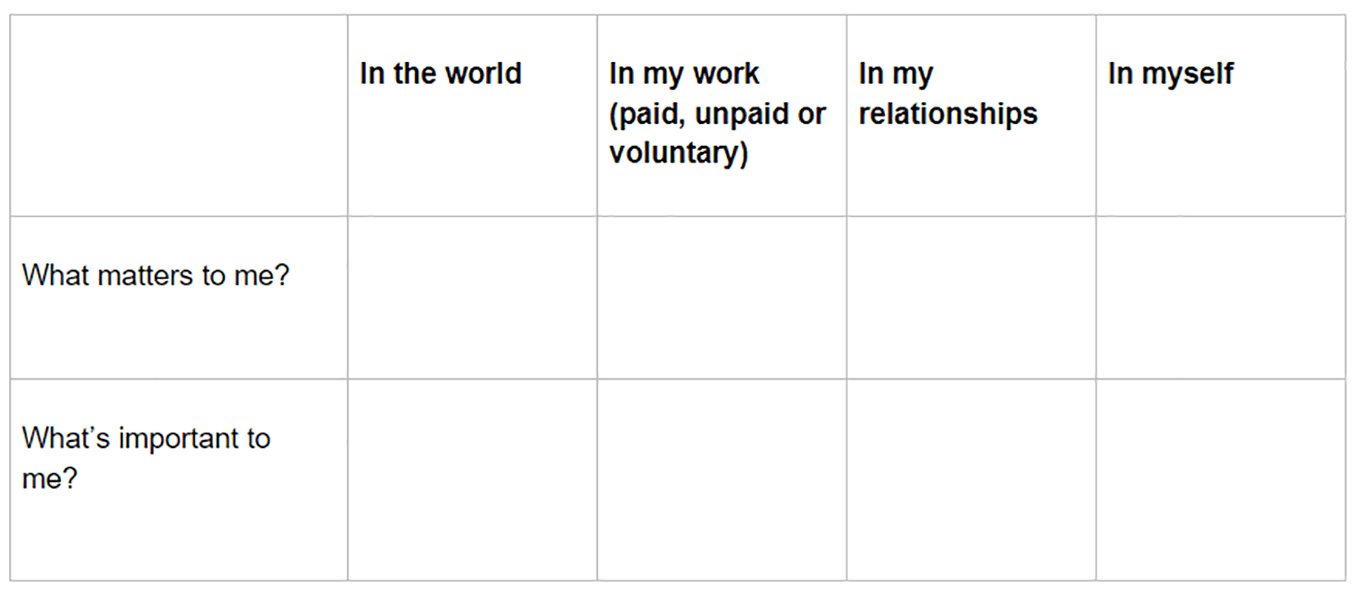Career self-assessment
Getting to know yourself in terms of where you are now, where you want to be and how you plan to get there are the first steps towards planning your career. If you have already started on your chosen study path also think about what attracted you to that area.
Life as a whole

Review your life so far and the key events that may have influenced any major decisions. Perhaps draw a life-line as shown in the example. This can help you discover aspects that you might want to develop and change, and be a starting point to plan for the future.
Drawing a mind map may also help generate new ideas and make associations between things that you haven’t thought of. There are apps and free software that can help with this. Reflect on what these say about you.
Take time to reflect on what the life-line and mind map say about you. Are any particular themes appearing?
Your skills and interests
Your skills and interests may indicate which careers would suit you. Do they lie within one of these groups?
- social (caring)
- communication or language
- organising, managing
- practical or technical
- living things, nature, outdoor, science, environment
- artistic, music, drama (creative)
- sport, leisure
The grouping is just a way to help you see the potential for jobs within a particular area. For instance, if you fall into the artistic (creative) category, you might like a career as an artist, sculptor or dressmaker. Do you consider yourself to have the talent to work and make a living in this way? Or you may prefer to use your interest and ability in this area to help others to enjoy the creative arts by, for example, teaching or organising exhibitions.
However, activities you enjoy as relaxation may be less fun if you have to do them all the time.
Your values
You may have values and beliefs that link to the type of work you want to do; work that benefits other people, animals or environment, or you may not be prepared to do some kinds of job on moral grounds. Terms such as 'corporate social responsibility' or 'diversity' may attract you to a particular employer or type of work.
Your values may relate to your work-life balance. Do you want to put all your energy into a career, or is work a way of funding your personal goals and interests? Record and review your beliefs and values on a grid, like the example shown, to help you think about what you want from work and give an opportunity to reflect on these.

Your needs, responsibilities and constraints
Make some notes of your needs, values and responsibilities to help you think about the possible constraints in your choice of career. Personal factors may affect your career choice. These could include:
- the need to earn a certain amount of money
- your age or health
- being responsible or caring for family members
- issues such as equality and diversity
- the need to stay in a particular area
- wanting to get a qualification as quickly as possible
- the need to gain a qualification which also gives professional recognition.
Given what you've identified, are there ways to overcome these?
- Have you considered all the possibilities that are open to you?
- Are the barriers you see as great as you first thought?
- Are there any creative strategies you could use to help overcome them?
Goal setting
Look at your goals in terms of a SWOT analysis (strengths, weaknesses, opportunities, threats) as shown in the example. This can help you focus on the main issues to consider and aim for a specific goal that is achievable.


Your Career Planning Guide
Deciding what you want to do with your career can feel like the start of an exciting journey, but it can also feel daunting if you're not sure where to start. Your Career Planning Guide is available to all students, you'll need to be signed in to access the guide.